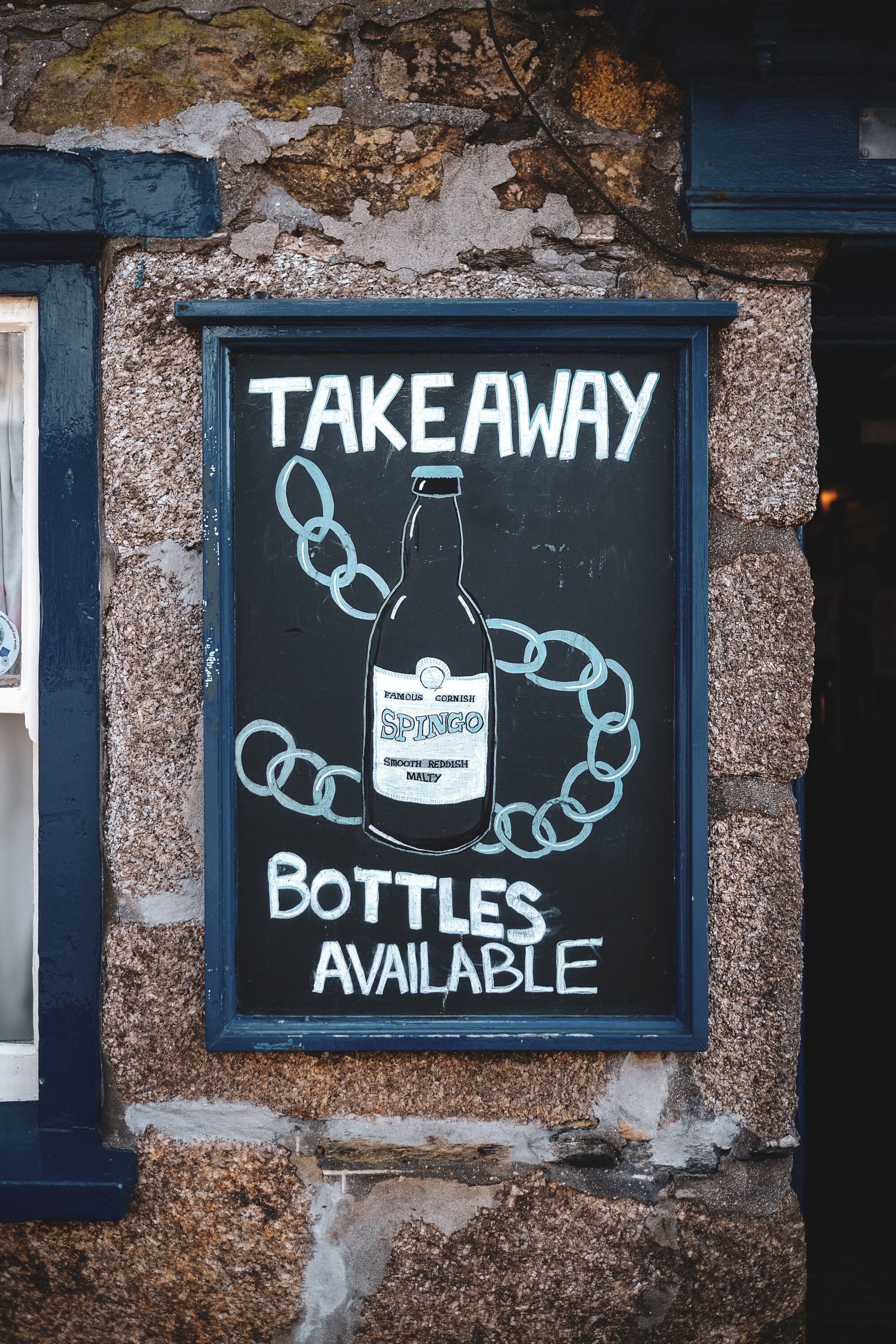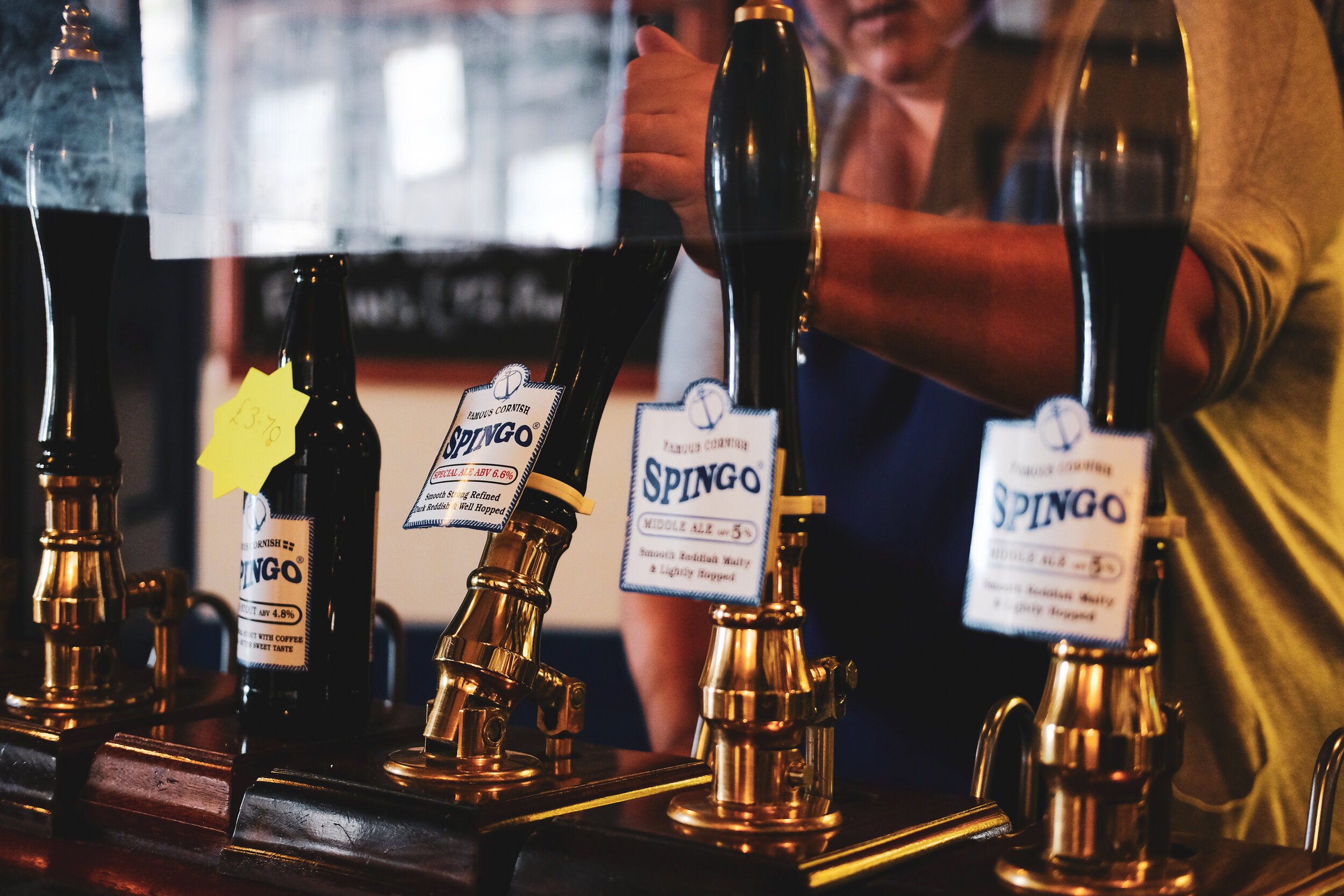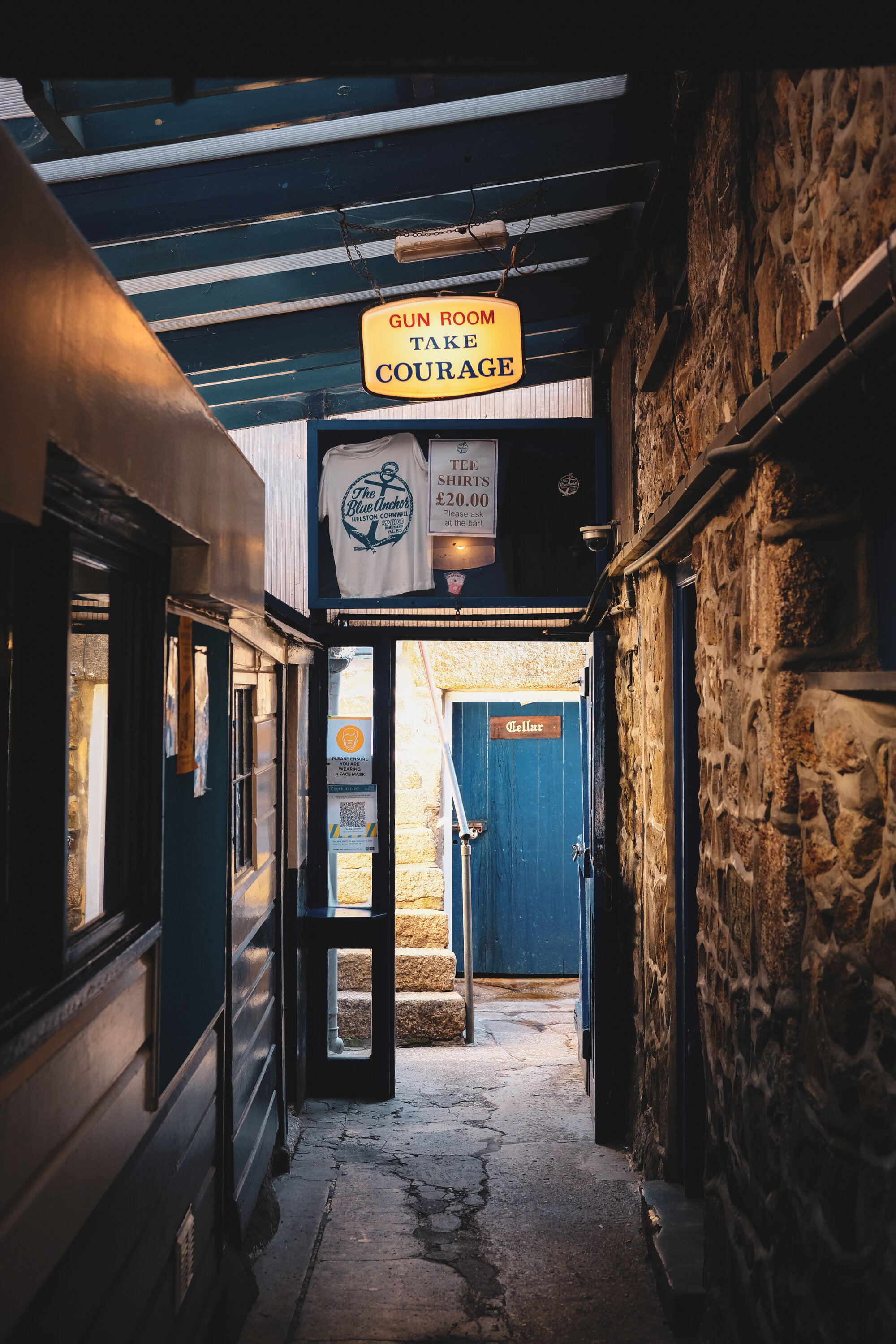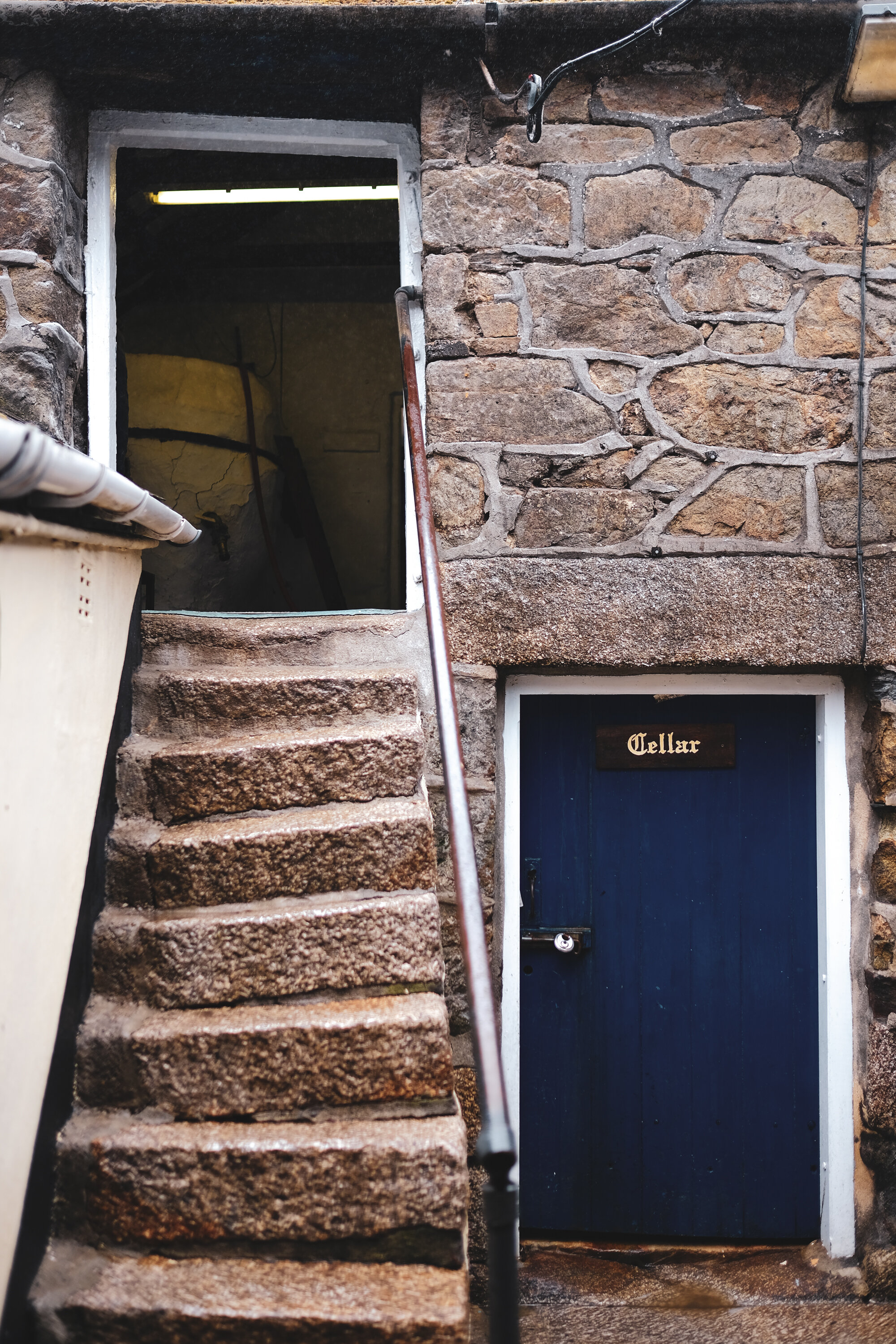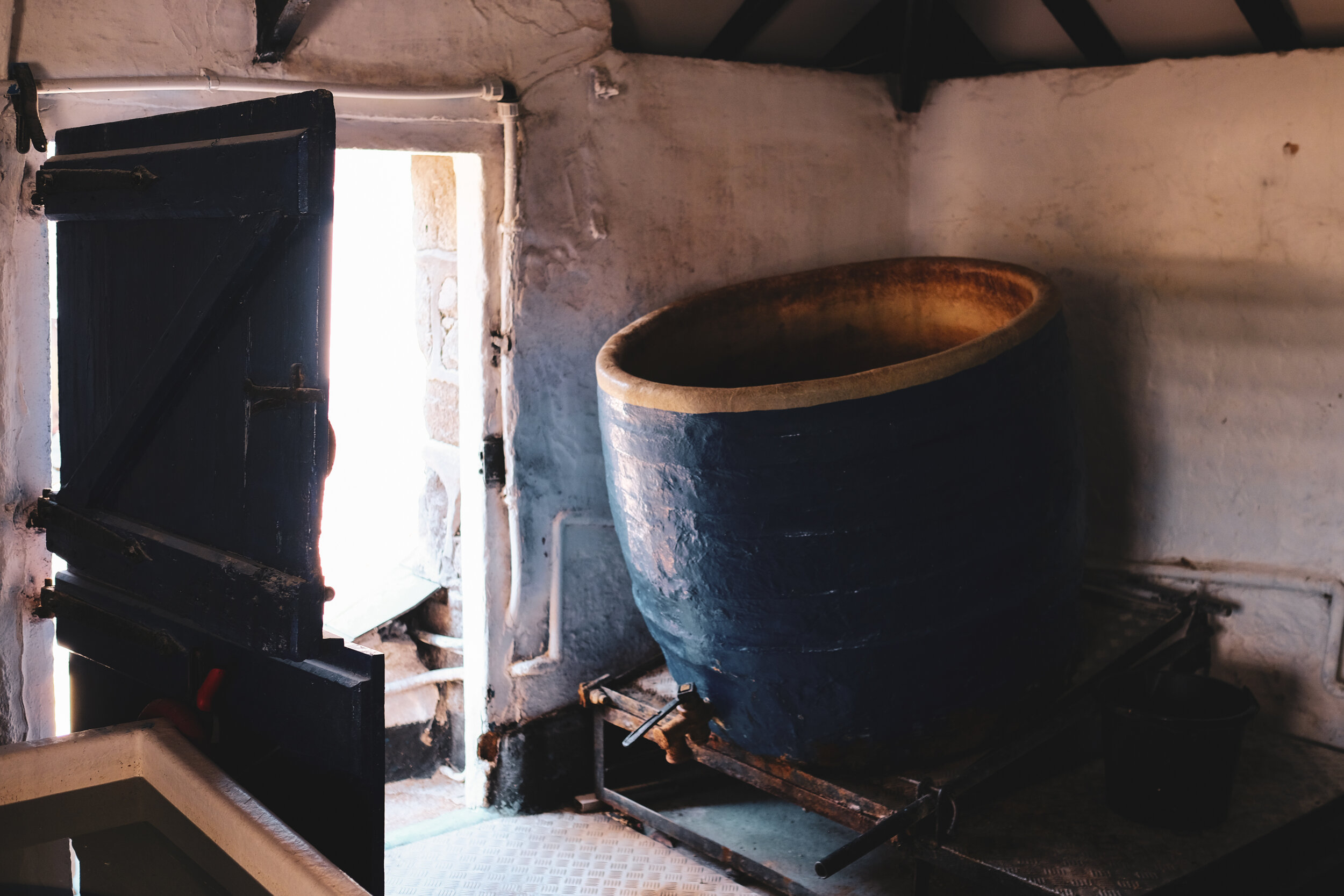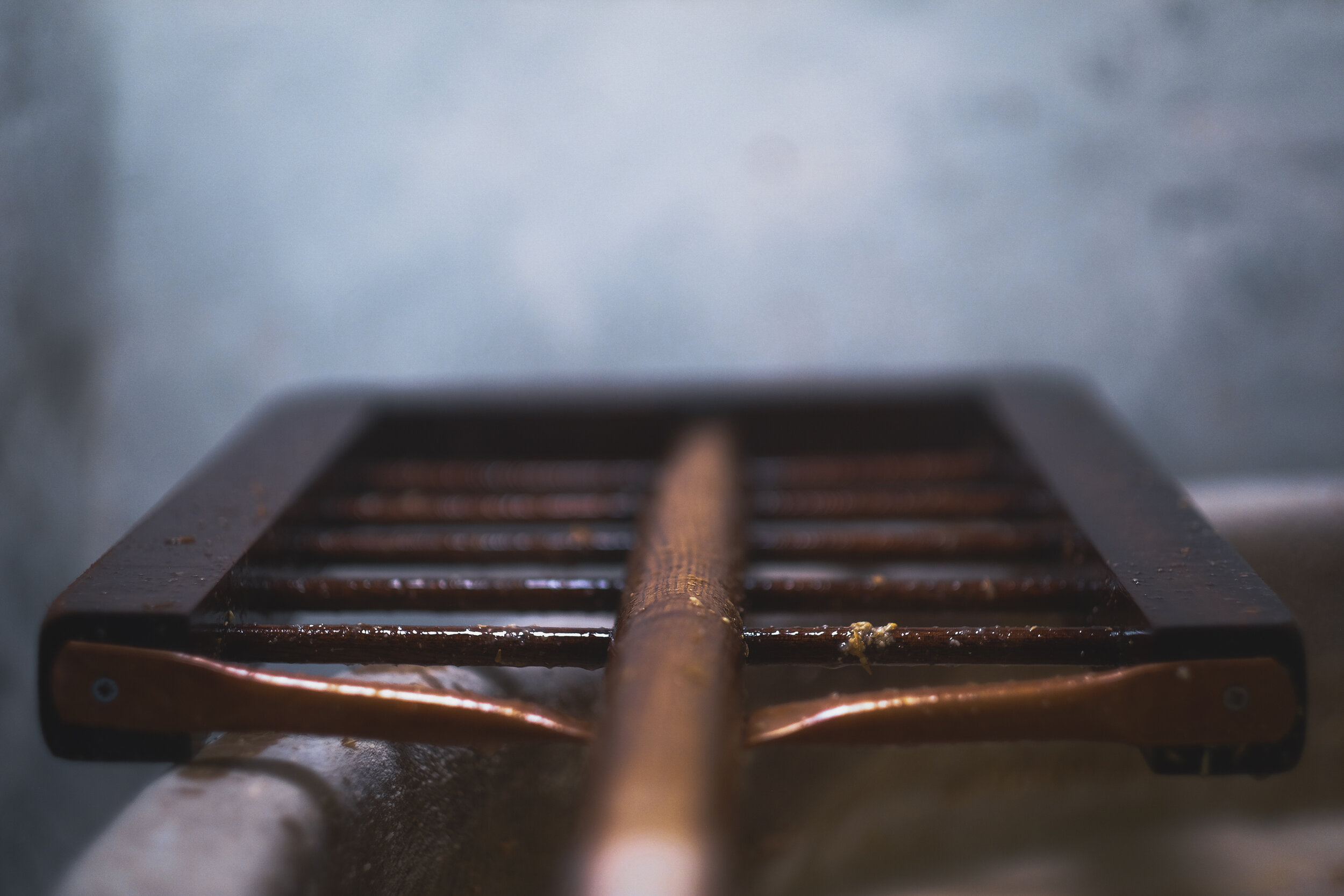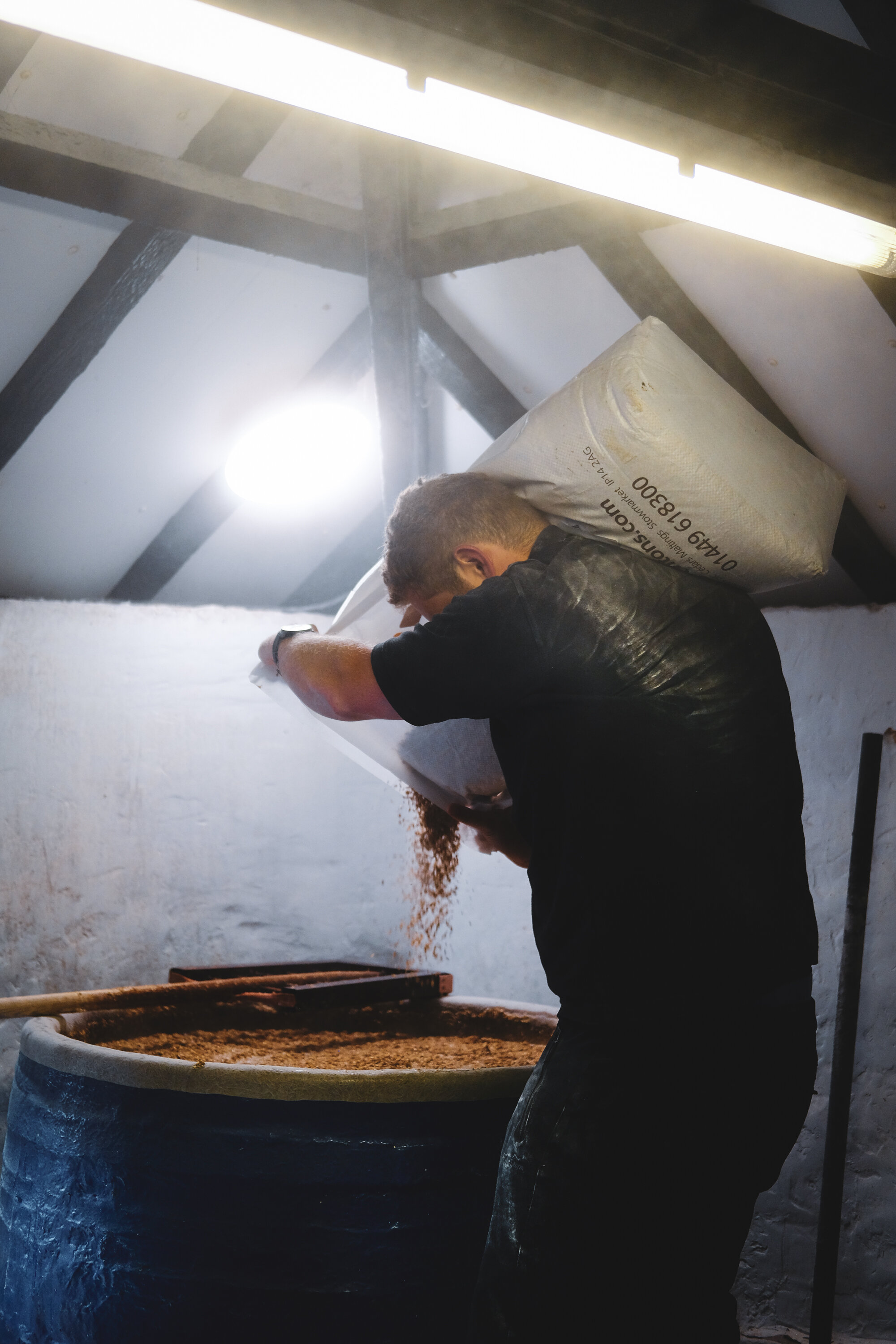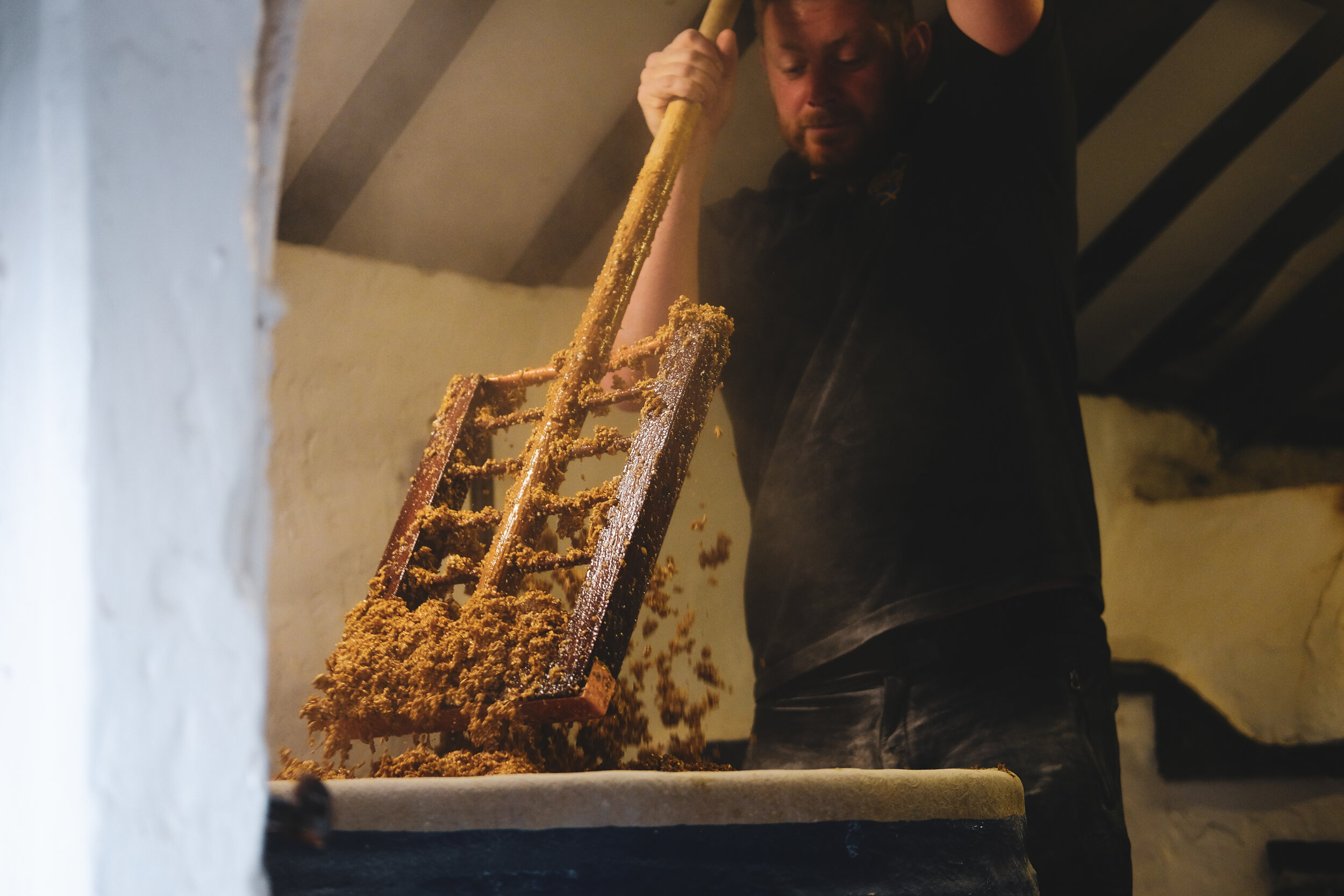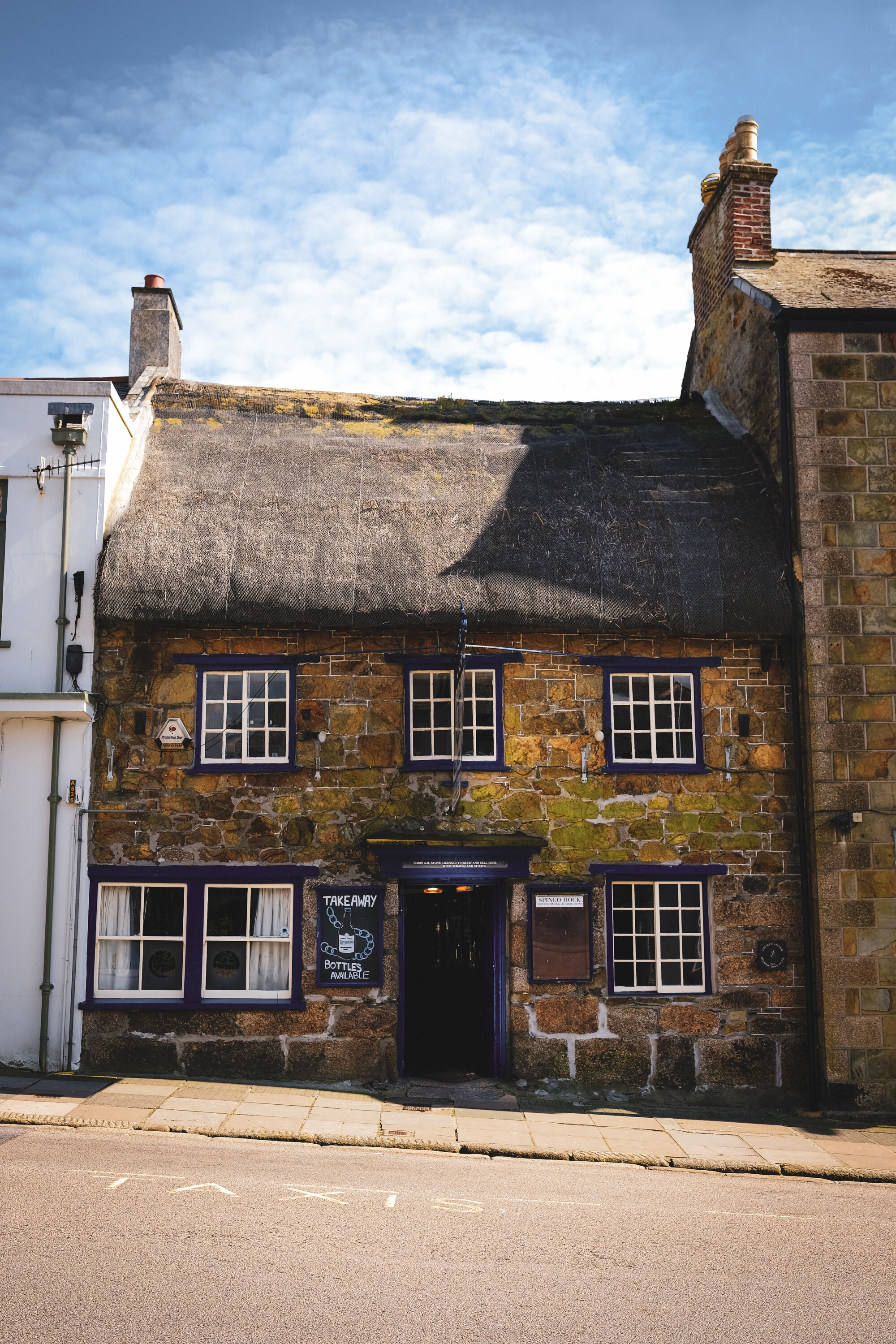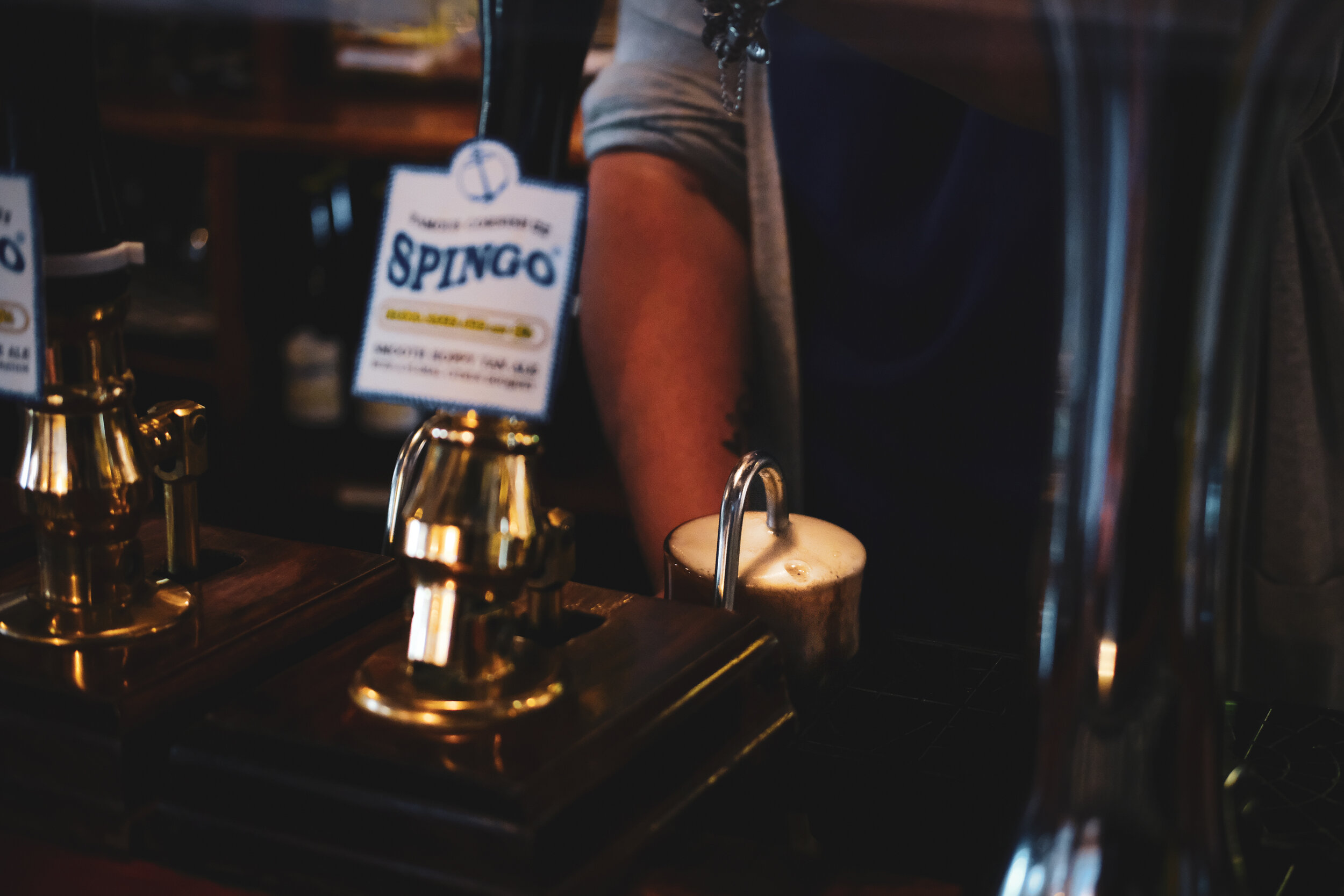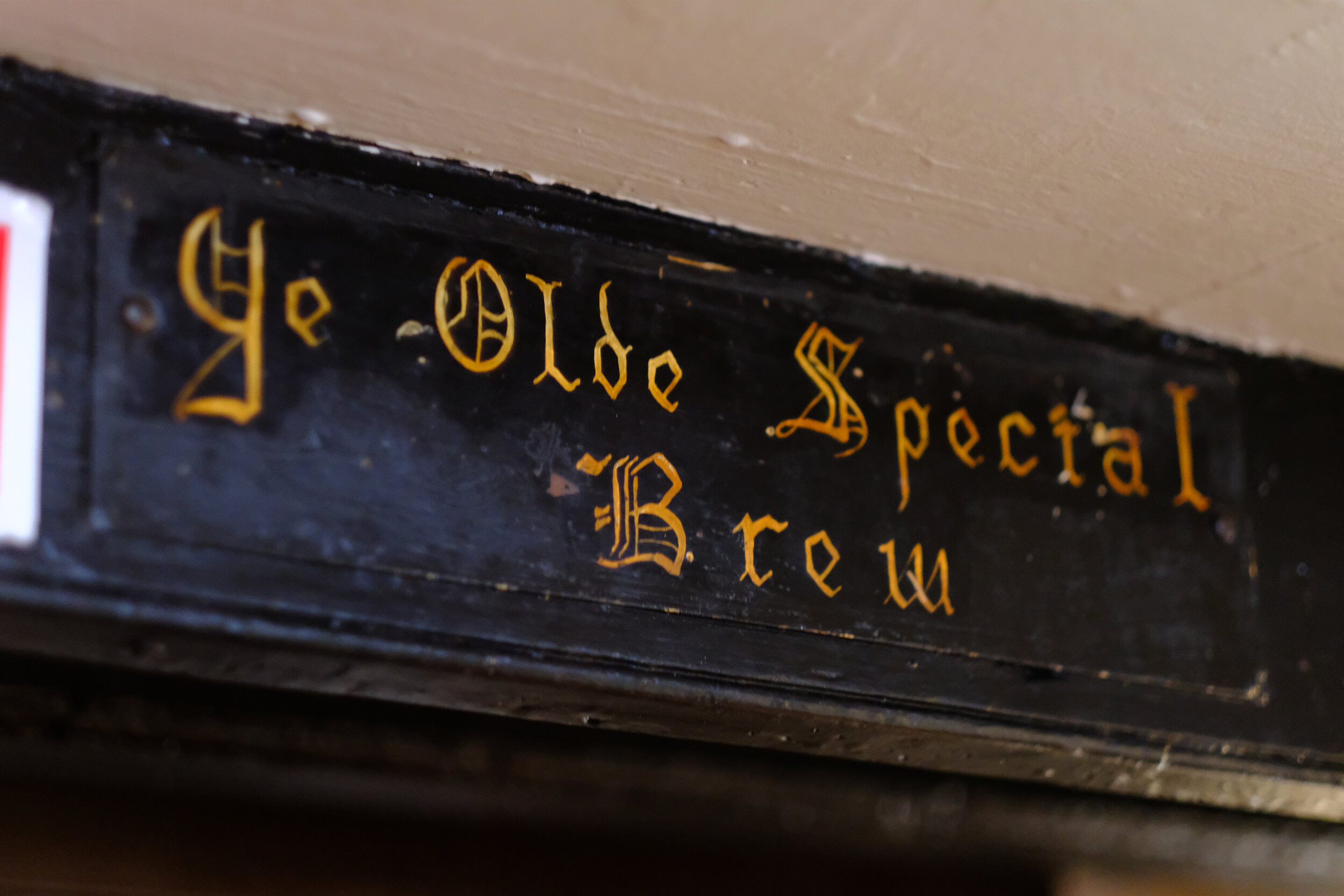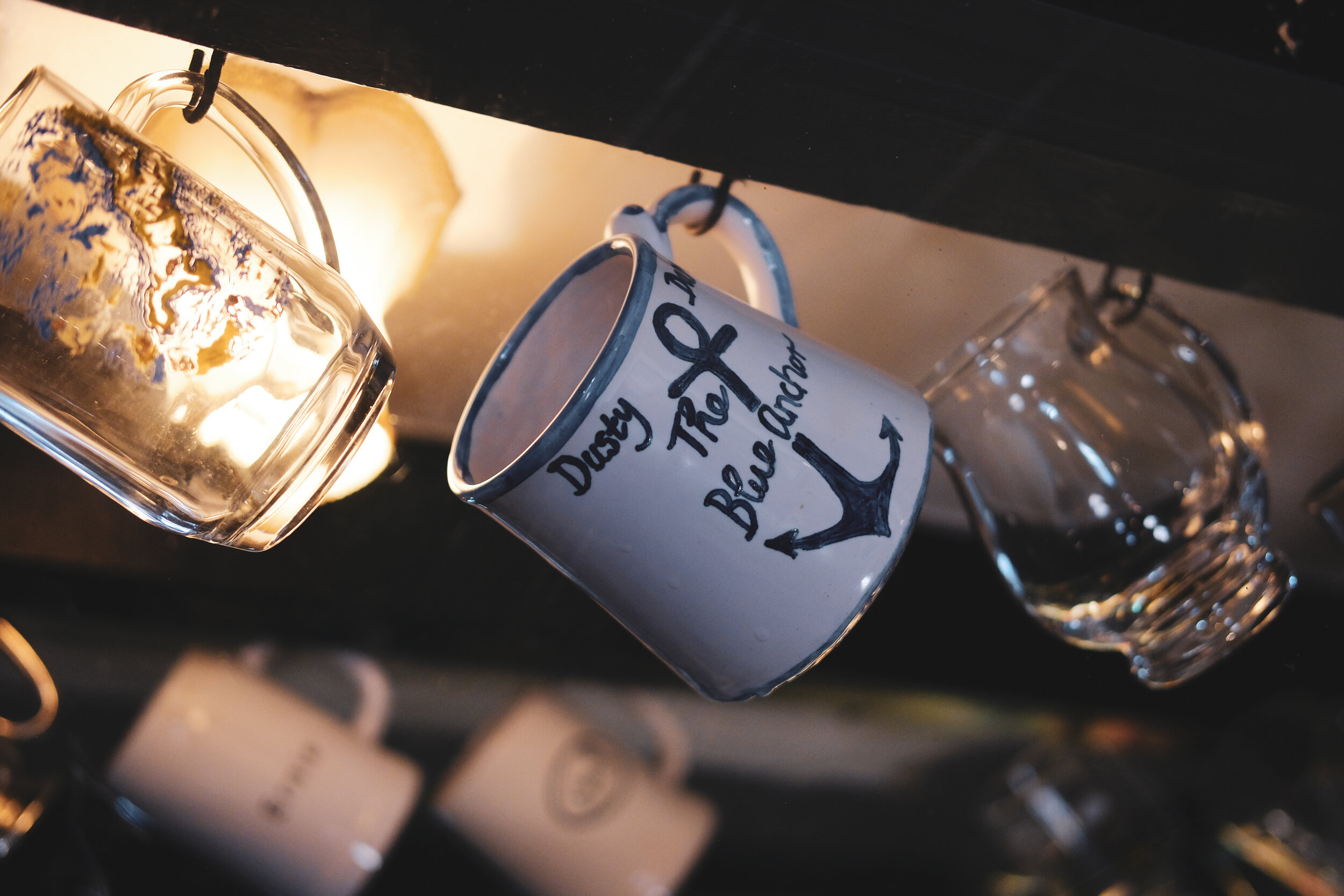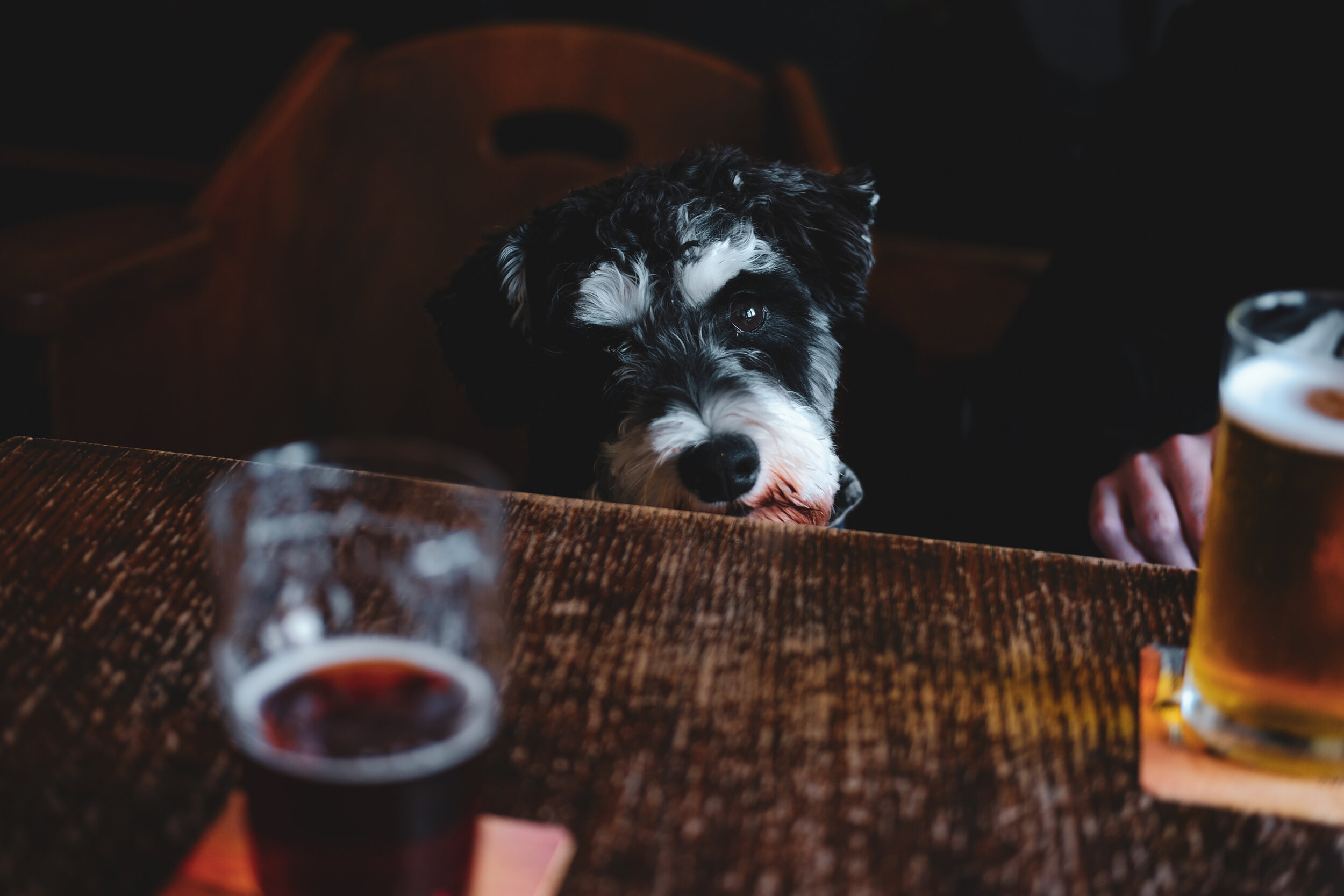Folk Round Here — The Blue Anchor Inn and Spingo Ales in Helston, Cornwall
“It’ll kill any infection,” pub regular and armchair epidemiologist Robert calls out from his seat in the small front bar at the Blue Anchor Inn, exaggerating perhaps a touch. “That’s why there’s no Covid in Cornwall.” When I ask if he means Spingo Special, he says “Yes, but only locals will believe me.”
“Have you tried the Special?” Robert asks. I haven’t, yet. “I can’t drink it—it’ll put me on the floor.”
Photography by Lily Waite
The beer of which he speaks is brewed at the Blue Anchor Inn in Helston, a small town near Cornwall’s South coast. Easily missed while walking up the sloping Coinagehall Street, the pub, but for the thatched roof, hides itself well. It is, as its swinging hand-painted sign proclaims, the oldest brewery in Cornwall, and one loved by locals and tourists alike.
“We have a strong local following,” brewer Ben Stone tells me. “But we get busloads of tourists from Germany, America, and they’ve all heard about it. I think it’s a bit of a beer lover’s pilgrimage.”
Inside, the Blue Anchor looks every bit its 600-or-so years old. Its rooms are divided down the middle by a flagstone alleyway, worn concave by centuries of footsteps; the two on the right connected by a cramped bar bedecked in tankards and lined up with hand pulls. Beams strut from side to side on the looming ceilings, occasionally adorned with curios—in at least two places hand-carved signs read “Ye Olde Special Brew”—and on the walls are standard snippets of history: late-Victorian photographs and newspaper clippings. One framed certificate recognises the pub’s inclusion in the first 10 editions of CAMRA’s Good Beer Guide. I half-expect a smuggler, tin miner, or a 1970s beer bod, replete with bumbag, to pop out at me. None do.
‘Spingo’, it seems, can refer to almost any of the beers brewed at the Blue Anchor, from Spingo Special to Spingo Middle to Flora Daze, though according to Jessica Boak, one half of beer bloggers Boak and Bailey, who lived in Penzance for six years, “When people say Spingo, they generally mean Middle.”
The Blue Anchor has long been a pub of great standing—its role as one of the ‘Historic Four’ (one of the four remaining brewpubs in the country before CAMRA’s beginnings in 1971) explains both its inclusion in the earliest editions of the Good Beer Guide and its status amongst beer enthusiasts—but it’s for Spingo that its legendary, and sometimes mythical image exists. It is, according to Historic England, likely the oldest operating pub-brewery in the country.
“Speak to any long-serving CAMRA bod and they will tell you all about how awful it was in the 1970s,” beer, cider, and cheese blogger Sarah Dunn says. “The Historic Four have kind of gone into beer folklore as tends to be the way of niche interests.”
Even in 1982, the significance of the Blue Anchor was understood, as the somewhat prescient narrator of television documentary Day In The Life of the Brewers of Helston explains: “If you ask, the beer enthusiast will tell you home-brew pubs are not just remnants of the past,” he says. “The rise of real ale and the success of places like the Blue Anchor have persuaded others to start new home breweries in many parts of Britain, happily adding to the beer drinker’s choice, and fuelling afresh the saloon bar arguments about which beer is best.”
***
Built as a monks’ rest house around 1400 and converted into a village tavern sometime in the mid-16th Century, different theories have formed around the pub’s role in brewing: the received wisdom is that beer has been produced in some form since first conversion to alehouse up to the present day.
“I’d say the brewery was built in the middle of the 18th century,” says former owner Geoffrey Richards in the documentary Day In The Life. “Originally it was supposed to be a monk’s rest house, or probably a church house. And of course monks always brewed beer, and probably when they gave up, they then built a brewery.”
““If you come here and abuse it, you’re going to have a bloody headache the next day.””
Tim Sears, brewer at the Blue Anchor from 1981 until the mid-2010s, writes in The Blue Anchor, Helston — The First 600 Years that his theory is broadly similar, and that brewing was continuous. Local historian Patrick Carroll refutes this, citing a lack of certifiable evidence for both the continuity of brewing and indeed the pub’s age, though maintains that brewing has historically taken place: “…it is certainly probable that in the early years of its post-1778 existence the inn brewed its own beer” and that “In any case, in-house brewing was certainly in operation by the turn of the 20th century.”
The brewery itself is at the back of the pub, up a slanted stone staircase and behind stable doors. It’s small—certainly in the context of today’s small breweries; you could likely fit it in a railway arch several times over—and peculiar: the kettle is bricked into the wall, and the mash tun’s bright fibreglass swaddling matches the bold blue of the brewery door. Beneath sits the cellar, inside which sits cuboid fermenting vessels, and the many casks that serve the Blue Anchor and other local pubs.
“The copper there’s got to be a good 70 years old at least,” says Ben, whose parents Simon and Kim Stone run the pub. “This mash tun’s an old barrel that’s just had the top cut off of it, and fibreglassed around. Nothing’s quite perfect, but it works.”
Tim Sears’ history of the brewery confirms this: the copper was fitted in the 1950s and the mash tun “fell off the back of a boat” in the 1920s, though Customs and Excise got to the contents of the wine barrel before the thirsty locals.
Spingo Special, the strongest of the five beers produced by Ben, is only 6.6%—despite what Robert may have you believe. This may pale in comparison with the strength of styles such as imperial stout or triple IPA, but it is strong. Even Spingo Middle, at a more reasonable 5%, is stronger than the average, and certainly to drinkers of more mainstream British beers that commonly sit closer to 4%.
“You have to remember the beer landscape was very different back then,” Sarah says of the 1970s. “Beers over 4.5% were considered a bit strong, beers over 5% not really for a school night, and anything more than that was really for special occasions, the end of the night, or a certain type of drinkers. Exmoor Beast, Sarah Hughes Dark Ruby Mild, Theakston Old Peculiar—in my opinion the strength of these beers gave them a mythical image. Spingo was one of these beers, but everyone would tell you it would get you a different type of drunk.”
“We've wondered if it can sometimes be even stronger than the 5% description suggests,” Jessica says. “It certainly feels as if it is and does, indeed, seem to get you extra pissed. It might just be that it's easier to neck it because it's relatively sweet, though, or that there's a sugar rush combined with the booze. For visitors to Helston, it's probably a shock to the system; and, from our observations, the front bar regulars just go at it hard.”
It is for this inebriating prowess, as well as sometimes a certain indefinable quality, that Spingo is known: stories of “getting Spingo’d” abound amongst locals and tourists alike. I ask Ben why the myth prevails: “I think [the strength] is the main thing,” he says. “But it’s like with any beer—if you come here and abuse it, you’re going to have a bloody headache the next day.”
***
Spingo Middle, the most popular of the pub’s three main offerings, was first brewed to welcome home soldiers returning from the First World War. “The only thing that I think would have changed is that we’ve added a bit of torrefied wheat, to get a better head on it,” explains Ben. “Other than that, I think it’s stayed the same.”
Middle is juicy and malty, rich with dried fruit and plum, a little nuttiness and a light peppering of bitterness. Its head is creamy thanks to Ben’s wheat, and thanks to the excellent condition the pub’s team keeps it in.
“When Middle is good, it's amazing” Ray Bailey, the other half of the beer blogging duo, tells me. “Rich, fruity, like ESB. Unfortunately, in summer, when most people drink it, it's not often at its best. The brewery isn't temperature controlled and as demand goes up, it gets less maturation time.” On my visit in the middle of June, Middle is tasting rather delicious indeed—I’m keen to visit when it’s supposedly tasting its best.
One defining characteristic of the various Spingos is their inability to be pinned down, style-wise. Ben tells me Middle is a “sort of mild”, though Ray’s less certain: “Middle is complicated. We reckon there's a distinct West Country ale style that includes this, Doom Bar and St Austell HSD. The emphasis is on sugar and malt, with barely any evident hopping.”
““You haven’t really experienced Spingo until you’ve had a pint at 8am on Flora Day, dispensed from a hosepipe into a plastic glass.””
Special is, according to Ben, a dark mild (though he can’t quite remember—it’s just Special), though it seems in the glass more of an ESB. Jessica half-jokingly classifies it as a “sort of a barley wine. Or a syrup.” It is fuller, more complex, and richer than Middle, whilst displaying similar dried fruit and plum character. Both are hopped with Goldings—“I guess that’s all they could get hold of back then,” says Ben.
Flora Daze is a “tan” ale hopped with Slovenian Bobek and Celeia hops, though at first inception in 2012 it was hopped with the US Amarillo variety, much to traditionalist Tim’s displeasure. It’s floral, a little zesty, and refreshing, with a touch more bitterness than its milder counterparts, though a world away from contemporary, or even other quasi-traditional Cornish, hoppy beer.
Bar the two most recent additions, Flora Daze and Ben’s Stout, each of the three main beers were brewed to mark some historic moment. As well as Middle’s inception marking the return of shell-shocked and traumatised soldiers, “Special was for Charles and Diana’s Wedding,” says Ben, “and then the IPA was for the Queen’s [Golden] Jubilee.” As imaginatively named as Ben’s Stout, the latter is named Jubilee IPA.
***
Tradition is, arguably, only what you make of it. The fetishisation of tradition, too, purely for its own sake can come at the cost of progress. For brewers such as Ben, however—surely at this point a custodian of a living history—tradition is simply standard procedure. Ben tells me whilst mashing in that Flora Daze is the Blue Anchor’s “newest” beer, despite being introduced in 2011—though if legend is to be believed and beer has been brewed onsite for 600-plus years, a 9-year-old beer is indeed new. Even if it is older than many of Britain’s craft breweries.
In Day In The Life of the Brewers of Helston, a young Tim Sears can be seen loading malt into the half-barrel mash tun by crouching down and heaving sack after sack onto his shoulders, trudging the few metres half-hunched over, and then pouring the contents over his head into the mash below. Upon my visit, I watched Ben’s rendition of this 40 year old dance. Here, it seems, tradition is simply the most efficient way of doing things. “It’s a nightmare,” he laughs.
“The Middle’s a bit of a hard one for the mash tun—it only holds about 450 litres,” he continues, “so you have to try to cram as much malt in as possible, and then liquor back. The fun bit’s trying to wrestle it all down, too. You’d probably be able to walk across it once I’m finished.”
As with any uniquely idiosyncratic brewery, the character of its beer is in part thanks to the equipment upon which it was brewed. Ben and co. are in the process of increasing production capacity in the form of a new brewery, though one significantly different from that in the back of the pub.
“We’re going to carry on with this one, but we’re getting a lot of people wanting to stock our beer,” Ben says. “So we’re building a new brewery on an industrial estate just at the top of town here. Hopefully we can replicate what we’re doing here.”
The challenge will lie in replicating the various Spingos’ unique character, derived from the archaic equipment upon which they’re brewed and the well beneath the brewery steps.
“Obviously boiling the water in the copper and then boiling [the wort] in the copper too, you’re going to get taints from it,” Ben explains. “Whether we put some copper piping in that it’ll all go through, or something like that, I don’t know. It’s just going to be an experiment for a bit; I don’t know if we’ll ever totally get the same product.”
Spingo, it would appear, is an anomaly in a county whose beer is defined by a handful of big breweries—St Austell, Sharp’s, Skinners. Though the beers—quite indefinable by any contemporary style guidelines—may vary a little from batch to batch and Ben’s uncertainty for the future may ring true, I don’t suppose the pub (and in turn the brewery) will ever lose its quasi-legendary status, nor its integral charm. And nor should it.
“Spingo is the definition of a cult beer. It stands outside the ‘scene’ and, like [local annual festival] Flora Day, is about Helston doing its own thing,” says Jessica. “They bring out a new beer every twenty years or so and that's it. The locals seem happy with Middle and, from our observations, seem to regard Flora Daze as a dangerous innovation. You haven't really experienced Spingo until you've had a pint at 8am on Flora Day, dispensed from a hosepipe into a plastic glass. Magic.”









